Electronic pop music laid slightly wounded in 1985.
It was a year of transition as DEPECHE MODE did not release a new album, but consolidated with a handy compilation ‘The Singles 81-85’ although its very weak new track ‘It’s Called A Heart’ was thankfully not a sign of things to come.
Meanwhile after the critical acclaim with their debut single, the Bobby Orlando produced version of ‘West End Girls’ in 1984, PET SHOP BOYS were struggling to gain traction despite signing a deal with EMI with their first single for the label ‘Opportunities (Let’s Make Lots Of Money)’ which stalled on its first release at No116; but a re-recorded version of ‘West End Girls’ produced by Stephen Hague issued towards the end of 1985 would change fortunes in time for the start of 1986.
One of the key singles of 1985 was ‘Slave To The Rhythm’ by Grace Jones; wonderful, sun-kissed funky pop in its radio version, producer Trevor Horn took the multiple remix approach he had piloted with FRANKIE GOES TO HOLLYWOOD to its zenith with the parent album. Having worked endlessy to come up with the perfect version and therefore different approaches, rather than actually do a collection of songs, why not do an album that was effectively multiple remixes and interpretations of one song?
The rise of FM synthesis, sampling and computer controlled systems during 1984, sidechained to the success of more guitar driven acts such as U2 and THE PSYCHEDELIC FURS in America, meant that traditional instruments and realistic presets were now the new badge of honour as music made with the inventive electronic sounds prevalent during Synth Britannia faced a backlash. EURYTHMICS moved away from synths to a more conventional band sound while THE SMITHS would continue to be held up by the music press as purer flagbearers of “real music” with Morrissey having already declared “there was nothing more repellent than the synthesizer…”
An early indicator of where things were heading came when ‘Don’t You (Forget About Me)’ was released by SIMPLE MINDS in February 1985 in the US as the theme to a new teen angst movie ‘The Breakfast Club’. Written by Steve Schiff with Keith Forsey who already had co-writes for ‘Flashdance’ and ‘Never Ending Story’ to his name, Radio1’s Richard Skinner called the song “bland” but highly FM radio friendly, it was an American No1 before the start of the Summer and was one of centrepieces of the US leg of Live Aid at JFK Stadium in Philadelphia. The event coincided with an explosion in corporate rock and “DDD” music made for the up-and-coming CD format by the likes of DIRE STRAITS.
This more rock-infused but technically polished new wave sound would be key to TEARS FOR FEARS’ huge success across the Atlantic with their second album ‘Songs From The Big Chair’. It saw bands like VITAMIN Z adopting that style and they even went as far as hiring Ross Cullum who co-produced TEARS FOR FEARS debut to helm their first album ‘Rites Of Passage’; despite a UK tour opening for Midge Ure, although sales were not forthcoming, singer Geoff Barradale would later use his experience to great effect when he managed ARCTIC MONEYS and took them to stardom.
The most disappointing record of 1985 was ‘Crush’ by OMD; while producer Stephen Hague made their sound more palatable for Trans-Atlantic consumption with more guitars, piano and acoustic drums as exemplified by the uninspiring single ‘So In Love’, the inner sleeve credit of “electronic keyboards” instead of individual synths as on ‘Dazzle Ships’ and ‘Junk Culture or “synthesizers” as on previous albums was a pointer to the blanding out of this once great band for a wider audience in the US.
Despite synths being less desirable in terms of Trans-Atlantic marketability in the move away from cooler European artistry, ELECTRICITYCLUB.CO.UK has been able to assemble a list of 20 albums seen as being part of the admittedly weaker electronic legacy of 1985. Listed in alphabetical order, there is a restriction of one album per artist moniker.
ABC How To Be A Zillionaire!
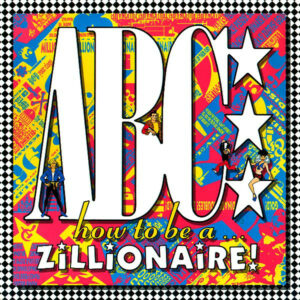 After the rockisms of ‘Beauty Stab’, the third ABC album sprung a major surprise in its New York electro flavoured lead single ‘How To Be A Millionaire’. “We saw it happening in Times Square, there were B-Boys doing that whole thing to KRAFTWERK which was just amazing. The minute the Emulator II came out, we bought one. No need to pay a Fairlight programmer £750 a day!” said Mark White; ‘Fear Of The World’ would later be sampled for the ELECTRONIC B-side ‘Lean To The Inside’.
After the rockisms of ‘Beauty Stab’, the third ABC album sprung a major surprise in its New York electro flavoured lead single ‘How To Be A Millionaire’. “We saw it happening in Times Square, there were B-Boys doing that whole thing to KRAFTWERK which was just amazing. The minute the Emulator II came out, we bought one. No need to pay a Fairlight programmer £750 a day!” said Mark White; ‘Fear Of The World’ would later be sampled for the ELECTRONIC B-side ‘Lean To The Inside’.
‘How To Be A Zillionaire!’ is still available via Mercury Records
A-HA Hunting High & Low
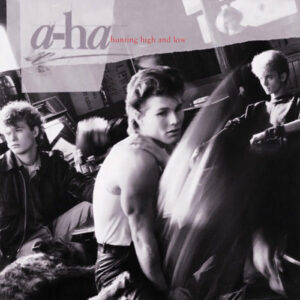 Despite being labelled a teenybop group, from the beginning A-HA were always so much more than just the catchy pop of ‘Take On Me’. Containing another three hit singles, there was the wistful ‘Hunting High & Low’ title song while ‘The Sun Always Shines On TV’ revealed a lyrical darkness as the combination of synths and edgy guitar put them in the same league as ULTRAVOX and ASSOCIATES. But ‘Living A Boy’s Adventure Tale’ was the track that outlined A-HA had longevity.
Despite being labelled a teenybop group, from the beginning A-HA were always so much more than just the catchy pop of ‘Take On Me’. Containing another three hit singles, there was the wistful ‘Hunting High & Low’ title song while ‘The Sun Always Shines On TV’ revealed a lyrical darkness as the combination of synths and edgy guitar put them in the same league as ULTRAVOX and ASSOCIATES. But ‘Living A Boy’s Adventure Tale’ was the track that outlined A-HA had longevity.
‘Hunting High & Low’ is still available via Rhino Entertainment
ARCADIA So Red The Rose
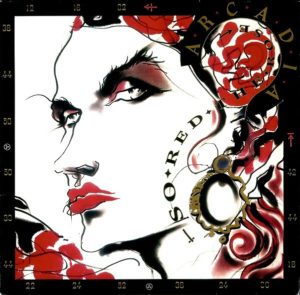 In response to THE POWER STATION, ARCADIA was Simon Le Bon, Nick Rhodes and Roger Taylor’s attempt to be JAPAN, smothered in an esoteric pond of lush arty indulgence. ‘Election Day’ featuring Grace Jones could have been a DURAN DURAN song, as could ‘The Flame’ which bore a resemblance to ‘A View To A Kill’. But ‘Goodbye Is Forever’ was art funk that pointed to where DURAN DURAN would head with ‘Notorious’.
In response to THE POWER STATION, ARCADIA was Simon Le Bon, Nick Rhodes and Roger Taylor’s attempt to be JAPAN, smothered in an esoteric pond of lush arty indulgence. ‘Election Day’ featuring Grace Jones could have been a DURAN DURAN song, as could ‘The Flame’ which bore a resemblance to ‘A View To A Kill’. But ‘Goodbye Is Forever’ was art funk that pointed to where DURAN DURAN would head with ‘Notorious’.
‘So Red The Rose’ is still available via EMI Music
ASSOCIATES Perhaps
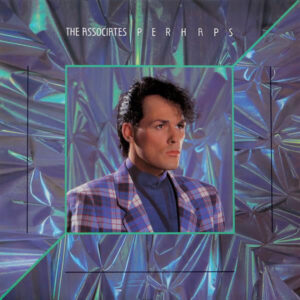 With the departure of Alan Rankine after ‘Sulk’, Billy Mackenzie recruited Martyn Ware and Martin Rushent on its follow-up ‘Perhaps’. Although more glossy in sound, the Rushent produced ‘Waiting For The Love Boat’ could have easily come off ‘Sulk’ while ‘Those First Impressions’ produced by Ware narrowly failed to crack the UK Top40. But the epic string laden drama of ‘Breakfast’ helmed by Rushent was possibly Mackenzie’s greatest single moment.
With the departure of Alan Rankine after ‘Sulk’, Billy Mackenzie recruited Martyn Ware and Martin Rushent on its follow-up ‘Perhaps’. Although more glossy in sound, the Rushent produced ‘Waiting For The Love Boat’ could have easily come off ‘Sulk’ while ‘Those First Impressions’ produced by Ware narrowly failed to crack the UK Top40. But the epic string laden drama of ‘Breakfast’ helmed by Rushent was possibly Mackenzie’s greatest single moment.
‘Perhaps’ is still available via Warner Music
http://www.billymackenzie.com/
BLANCMANGE Believe You Me
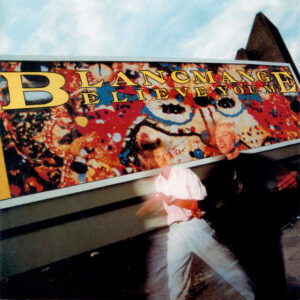 Despite good crossover songs such as ‘Why Don’t They Leave Things Alone?’ and ‘Lorraine’s My Nurse’, with synthpop now no longer in-vogue, there was a lukewarm reception for the third BLANCMANGE album ‘Believe You Me’. With a proclamation from Neil Arthur that “I feel like I’m losin’ my mind” in the electro-funk of ‘22339’, it led to him and Luscombe calling it a day in order to protect their friendship after a show at the Royal Albert Hall.
Despite good crossover songs such as ‘Why Don’t They Leave Things Alone?’ and ‘Lorraine’s My Nurse’, with synthpop now no longer in-vogue, there was a lukewarm reception for the third BLANCMANGE album ‘Believe You Me’. With a proclamation from Neil Arthur that “I feel like I’m losin’ my mind” in the electro-funk of ‘22339’, it led to him and Luscombe calling it a day in order to protect their friendship after a show at the Royal Albert Hall.
‘Believe You Me’ is still available via London Records
CHINA CRISIS Flaunt The Imperfection
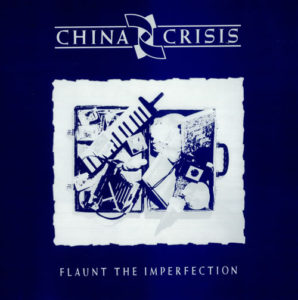 Produced by Walter Becker of STEELY DAN, the influence of his band on ‘Flaunt The Imperfection’ resulted in much more of a live soulful feel with the contribution of accomplished session musicians while Gary Daly and Eddie Lundon focussed on the songwriting. Classic CHINA CRISIS songs like ‘Black Man Ray’ and ‘King In A Catholic Style’ secured two UK Top20 hits from a single album for the first time.
Produced by Walter Becker of STEELY DAN, the influence of his band on ‘Flaunt The Imperfection’ resulted in much more of a live soulful feel with the contribution of accomplished session musicians while Gary Daly and Eddie Lundon focussed on the songwriting. Classic CHINA CRISIS songs like ‘Black Man Ray’ and ‘King In A Catholic Style’ secured two UK Top20 hits from a single album for the first time.
‘Flaunt The Imperfection’ is still available via Caroline International
https://www.facebook.com/chinacrisisofficial
DEAD OR ALIVE Youthquake
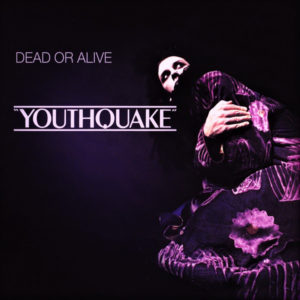 DEAD OR ALIVE looked like they’d missed the boat when their rivals FRANKIE GOES TO HOLLYWOOD reached No1 with ‘Relax’. Having heard ‘You Think You’re A Man’ by Divine, Burns recruited the song’s production team of Stock, Aitken & Waterman to work on ‘You Spin Me Round (Like A Record)’ which hit the top of the UK singles chart. The eventual ‘Youthquake’ album was a mixed bag, but included another hit ‘In Too Deep’ and the gothic funk epic ‘It’s Been A Long Time’.
DEAD OR ALIVE looked like they’d missed the boat when their rivals FRANKIE GOES TO HOLLYWOOD reached No1 with ‘Relax’. Having heard ‘You Think You’re A Man’ by Divine, Burns recruited the song’s production team of Stock, Aitken & Waterman to work on ‘You Spin Me Round (Like A Record)’ which hit the top of the UK singles chart. The eventual ‘Youthquake’ album was a mixed bag, but included another hit ‘In Too Deep’ and the gothic funk epic ‘It’s Been A Long Time’.
‘Youthquake’ is still available via Edsel Records
ERASURE Wonderland
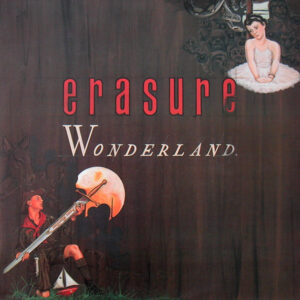 Andy Bell and Vince Clarke’s debut album ‘Wonderland’ was not an instant hit. The lead single ‘Who Needs Love (Like That)?’ was mistaken by some to be an unreleased YAZOO recording. Among the album’s highlights were the joyous ‘Reunion’ and the funky ‘Push Me… Shove Me’ . The record’s HI-NRG centrepiece ‘Oh L’Amour’ flopped as a single but undeterred, ERASURE toured the college circuit to build up a new fanbase from scratch.
Andy Bell and Vince Clarke’s debut album ‘Wonderland’ was not an instant hit. The lead single ‘Who Needs Love (Like That)?’ was mistaken by some to be an unreleased YAZOO recording. Among the album’s highlights were the joyous ‘Reunion’ and the funky ‘Push Me… Shove Me’ . The record’s HI-NRG centrepiece ‘Oh L’Amour’ flopped as a single but undeterred, ERASURE toured the college circuit to build up a new fanbase from scratch.
‘Wonderland’ is still available via Mute Records
JANSEN BARBIERI Worlds In A Small Room
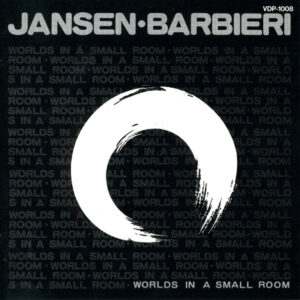 After JAPAN, drummer Steve Jansen and keyboardist Richard Barbieri formed a new creative partnership. ‘Worlds In A Small Room’ was an instrumental suite commissioned by JVC to accompany a documentary about the Space Shuttle Challenger. ‘Breaking The Silence’ was a beautiful opening piece with elements recalling Ryuichi Sakamoto while the more structured ‘Moving Circles’ had a Jansen vocal added for the Japanese release’s bonus song ‘Move In Circles’.
After JAPAN, drummer Steve Jansen and keyboardist Richard Barbieri formed a new creative partnership. ‘Worlds In A Small Room’ was an instrumental suite commissioned by JVC to accompany a documentary about the Space Shuttle Challenger. ‘Breaking The Silence’ was a beautiful opening piece with elements recalling Ryuichi Sakamoto while the more structured ‘Moving Circles’ had a Jansen vocal added for the Japanese release’s bonus song ‘Move In Circles’.
‘Worlds In A Small Room’ is currently unavailable
http://www.richardbarbieri.co.uk/
HOWARD JONES Dream Into Action
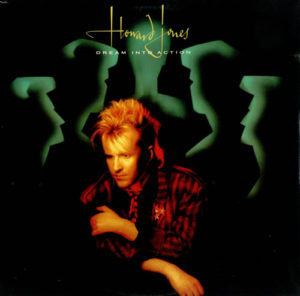 Thanks to the success of his debut album ‘Human’s Lib’, the follow-up ‘Dream Into Action’ was written by Howard Jones on the road by necessity; “I was writing in dressing rooms on an Akai 12 track recorder…” he said, “we were experimenting a lot so it’s a much more complex record”. There were hopeful anthems in ‘Things Can Only Get Better’ and ‘Life In One Day’ while the plaintive ‘No One Is To Blame’ would become a huge Trans-Atlantic hit in a new version produced by Phil Collins.
Thanks to the success of his debut album ‘Human’s Lib’, the follow-up ‘Dream Into Action’ was written by Howard Jones on the road by necessity; “I was writing in dressing rooms on an Akai 12 track recorder…” he said, “we were experimenting a lot so it’s a much more complex record”. There were hopeful anthems in ‘Things Can Only Get Better’ and ‘Life In One Day’ while the plaintive ‘No One Is To Blame’ would become a huge Trans-Atlantic hit in a new version produced by Phil Collins.
‘Dream Into Action’ is still available via Cherry Red Records
NEW ORDER Low-life
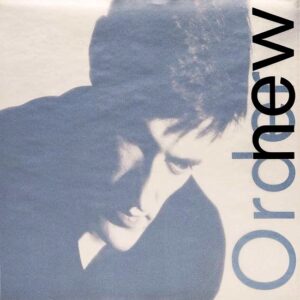 ‘Low-life’ saw for the first time, a single ‘The Perfect Kiss’ taken from a NEW ORDER album as a compromise following a new US deal with Qwest Records. ‘Low-life’ featured several other highlights and opened with the Country ‘n’ North Western ghost story ‘Love Vigilantes’. The mighty ‘Sunrise’ was another number in the tit-for-that exchange with THE CURE which was clearly influenced by ‘A Forest’ while the brilliant ‘This Time Of Night’ exuded a throbbing post-punk growl.
‘Low-life’ saw for the first time, a single ‘The Perfect Kiss’ taken from a NEW ORDER album as a compromise following a new US deal with Qwest Records. ‘Low-life’ featured several other highlights and opened with the Country ‘n’ North Western ghost story ‘Love Vigilantes’. The mighty ‘Sunrise’ was another number in the tit-for-that exchange with THE CURE which was clearly influenced by ‘A Forest’ while the brilliant ‘This Time Of Night’ exuded a throbbing post-punk growl.
‘Low-life’ is still available via Rhino
GARY NUMAN The Fury
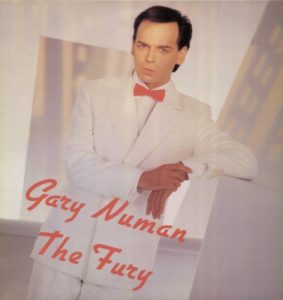 Co-produced with PPG operators The Wave Team, ‘The Fury’ was the best Gary Numan album since ‘Telekon’. Although very much with the times and in line with acts like FRANKIE GOES TO HOLLYWOOD and DEAD OR ALIVE, the hard but bright digital sound complimented Numan’s downbeat lyrical outlook. Among the highlights were ‘Call Out The Dogs’, ‘Tricks’ and ‘Miracles’ while the haunting closing track ‘I Still Remember’ was a vocal reimagining of the 1979 instrumental ‘Random’.
Co-produced with PPG operators The Wave Team, ‘The Fury’ was the best Gary Numan album since ‘Telekon’. Although very much with the times and in line with acts like FRANKIE GOES TO HOLLYWOOD and DEAD OR ALIVE, the hard but bright digital sound complimented Numan’s downbeat lyrical outlook. Among the highlights were ‘Call Out The Dogs’, ‘Tricks’ and ‘Miracles’ while the haunting closing track ‘I Still Remember’ was a vocal reimagining of the 1979 instrumental ‘Random’.
‘The Fury’ is still available via Eagle Records
PHILIP OAKEY & GIORGIO MORODER Philip Oakey & Giorgio Moroder
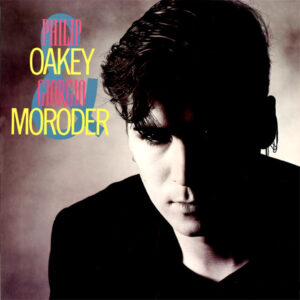 After the worldwide success of ‘Together In Electric Dreams’ and the lukewarm response to THE HUMAN LEAGUE’s ‘Hysteria’ in 1984, Virgin Records swiftly despatched Philip Oakey to record an album with Giorgio Moroder. ‘Now’ was Oakey’s heartfelt commentary on economic corruption while the thumping side one segue of ‘Why Must The Show Go On?’, ‘Good-Bye Bad Times’ and ‘Take A Chance’ was a thrilling train ride.
After the worldwide success of ‘Together In Electric Dreams’ and the lukewarm response to THE HUMAN LEAGUE’s ‘Hysteria’ in 1984, Virgin Records swiftly despatched Philip Oakey to record an album with Giorgio Moroder. ‘Now’ was Oakey’s heartfelt commentary on economic corruption while the thumping side one segue of ‘Why Must The Show Go On?’, ‘Good-Bye Bad Times’ and ‘Take A Chance’ was a thrilling train ride.
‘Philip Oakey & Giorgio Moroder’ is still available via Virgin Records
https://www.giorgiomoroder.com/
PROPAGANDA A Secret Wish
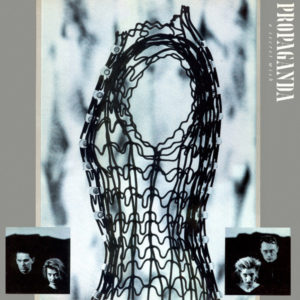 Düsseldorf’s PROPAGANDA were dubbed “ABBA in Hell”! The magnificent film noir of ‘Dr Mabuse’ was their opening salvo produced by Trevor Horn. The producer’s helm was handed over to engineer Stephen J Lipson for the album ‘A Secret Wish’. ‘Duel’ exuded an accessible ice maiden cool while the Teutonic ‘P.Machinery’ was full of state of the art technical tricks. With the lengthy and poetic ‘Dream Within A Dream’, the listener was taken on a massive sonic adventure.
Düsseldorf’s PROPAGANDA were dubbed “ABBA in Hell”! The magnificent film noir of ‘Dr Mabuse’ was their opening salvo produced by Trevor Horn. The producer’s helm was handed over to engineer Stephen J Lipson for the album ‘A Secret Wish’. ‘Duel’ exuded an accessible ice maiden cool while the Teutonic ‘P.Machinery’ was full of state of the art technical tricks. With the lengthy and poetic ‘Dream Within A Dream’, the listener was taken on a massive sonic adventure.
‘A Secret Wish’ is still available via ZTT / BMG
SCRITTI POLITTI Cupid & Psyche 85
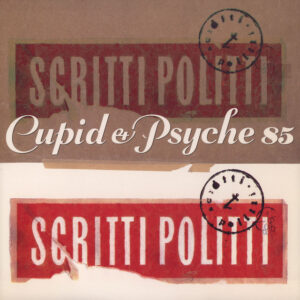 The first major label SCRITTI POLITTI LP ‘Cupid & Psyche 85’ contained the 1984 Arif Mardin produced hits ‘Wood Beez (Pray Like Aretha Franklin)’ and ‘Absolute’, the latter also seeing input from Gary Langan and JJ Jeczalik of THE ART OF NOISE. Green Gartside embraced of mainstream dance pop and state-of-the-art studio production with new song writing partner David Gamson. Meanwhile self-produced reggae inflected ‘The Word Girl returned to sound of earlier Scritti.
The first major label SCRITTI POLITTI LP ‘Cupid & Psyche 85’ contained the 1984 Arif Mardin produced hits ‘Wood Beez (Pray Like Aretha Franklin)’ and ‘Absolute’, the latter also seeing input from Gary Langan and JJ Jeczalik of THE ART OF NOISE. Green Gartside embraced of mainstream dance pop and state-of-the-art studio production with new song writing partner David Gamson. Meanwhile self-produced reggae inflected ‘The Word Girl returned to sound of earlier Scritti.
‘Cupid & Psyche 85’ is still available via Virgin Records
SIMPLE MINDS Once Upon A Time
 After the harder new rock sound of ‘Sparkle In The Rain’ produced by Steve Lillywhite, SIMPLE MINDS brought the synths back in, albeit with a Trans-Atlantic sheen helmed by American production heavyweights Jimmy Iovine and Bob Clearmountain. Despite the modern FM rock bombast which even included a rhythm n blues flavour on ‘Sanctify Yourself’, ‘Alive & Kicking’ saw Mick McNeil’s Gaelic accordion virtuosity applied to electronic keyboards for a huge hit in the US and Europe.
After the harder new rock sound of ‘Sparkle In The Rain’ produced by Steve Lillywhite, SIMPLE MINDS brought the synths back in, albeit with a Trans-Atlantic sheen helmed by American production heavyweights Jimmy Iovine and Bob Clearmountain. Despite the modern FM rock bombast which even included a rhythm n blues flavour on ‘Sanctify Yourself’, ‘Alive & Kicking’ saw Mick McNeil’s Gaelic accordion virtuosity applied to electronic keyboards for a huge hit in the US and Europe.
‘Once Upon A Time’ is still available via Universal Music
TEARS FOR FEARS Songs From The Big Chair
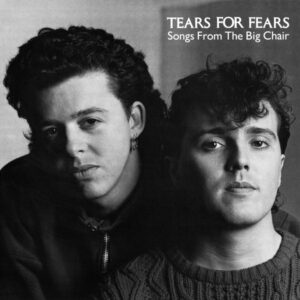 DespiteTEARS FOR FEARS adopting more guitar compared to its predecessor ‘The Hurting’, the more band oriented ‘Songs From The Big Chair’ were still characterised by electronics and rhythm programming in its backbone. Cold War angst provided the tension to ‘Shout’ and the big American driving hit ‘Everybody Wants To Rule The World’ while ‘Head Over Heels’ with its blistering synth solo was another Stateside hit, later in the 2001 psychological thriller ‘Donnie Darko’.
DespiteTEARS FOR FEARS adopting more guitar compared to its predecessor ‘The Hurting’, the more band oriented ‘Songs From The Big Chair’ were still characterised by electronics and rhythm programming in its backbone. Cold War angst provided the tension to ‘Shout’ and the big American driving hit ‘Everybody Wants To Rule The World’ while ‘Head Over Heels’ with its blistering synth solo was another Stateside hit, later in the 2001 psychological thriller ‘Donnie Darko’.
‘Songs From The Big Chair’ is still available via Universal Music
WINSTON TONG Theoretically Chinese
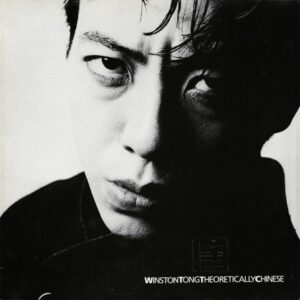 Produced by Alan Rankine, ‘Theoretically Chinese’ was as much of an electronic pop departure for Winston Tong from TUXEDMOON as Robert Görl’s ‘Night Full Of Tension’ was from DAF. The era’s inherent Cold War tensions also loomed large on the fine pulsing opener ‘Big Brother’ as well as an excellent uptempo cover of Marianne Faithfull’s ‘Broken English’ while ‘Reports From The Heart’ provided an elegant sweeping ballad.
Produced by Alan Rankine, ‘Theoretically Chinese’ was as much of an electronic pop departure for Winston Tong from TUXEDMOON as Robert Görl’s ‘Night Full Of Tension’ was from DAF. The era’s inherent Cold War tensions also loomed large on the fine pulsing opener ‘Big Brother’ as well as an excellent uptempo cover of Marianne Faithfull’s ‘Broken English’ while ‘Reports From The Heart’ provided an elegant sweeping ballad.
‘Theoretically Chinese’ is still available via LTM
https://www.ltmrecordings.com/theoretically_chinese_ltmcd2382.html
MIDGE URE The Gift
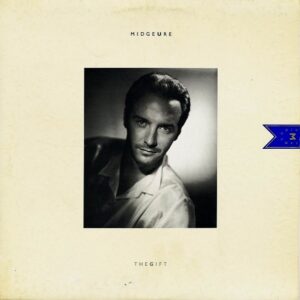 Midge Ure finally took the solo album plunge with ‘The Gift’. Songs like ‘When The Wind Blows’, ‘That Certain Smile’ and the title track sounded like ULTRAVOX enough to potentially worry his bandmates. But ULTRAVOX would never have covered JETHRO TULL’s ‘Living In The Past’ or recorded the lovey-dovey UK No1 single ‘If I Was’ which was rescued from the unreleased vaults of MESSENGERS whose instrumentalist Danny Mitchell was Ure’s main collaborator on this great adventure.
Midge Ure finally took the solo album plunge with ‘The Gift’. Songs like ‘When The Wind Blows’, ‘That Certain Smile’ and the title track sounded like ULTRAVOX enough to potentially worry his bandmates. But ULTRAVOX would never have covered JETHRO TULL’s ‘Living In The Past’ or recorded the lovey-dovey UK No1 single ‘If I Was’ which was rescued from the unreleased vaults of MESSENGERS whose instrumentalist Danny Mitchell was Ure’s main collaborator on this great adventure.
‘The Gift’ is still available via Chrysalis Records
YELLO Stella
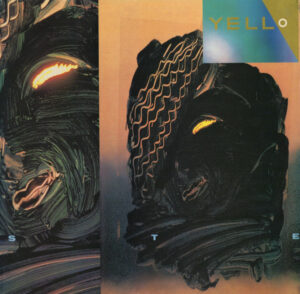 ‘Stella’ was the first album YELLO made without founder member Carlos Perón; Boris Blank and Dieter Meier headed towards a more cinematic style of experimental pop, making greater use of the Fairlight and digital synths. It included the delightful ‘Vicious Games’ featuring vocals by Rush Winters but the album’s biggest track was ‘Oh Yeah’ which ended up in ‘Ferris Bueller’s Day Off’, ‘The Secret of My Success’ and ‘The Simpsons’.
‘Stella’ was the first album YELLO made without founder member Carlos Perón; Boris Blank and Dieter Meier headed towards a more cinematic style of experimental pop, making greater use of the Fairlight and digital synths. It included the delightful ‘Vicious Games’ featuring vocals by Rush Winters but the album’s biggest track was ‘Oh Yeah’ which ended up in ‘Ferris Bueller’s Day Off’, ‘The Secret of My Success’ and ‘The Simpsons’.
‘Stella’ is still available via Universal Music
Text by Chi Ming Lai
9th January 2025

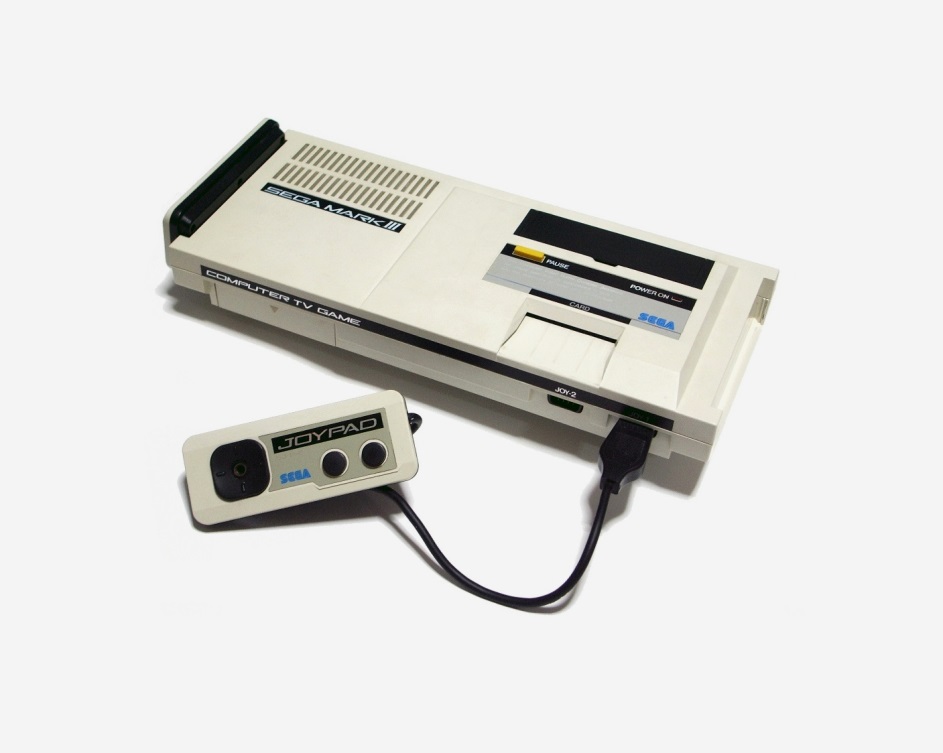

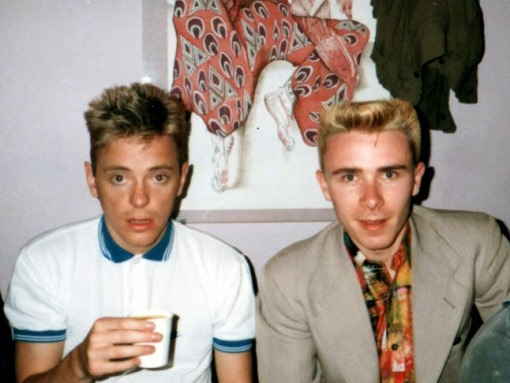
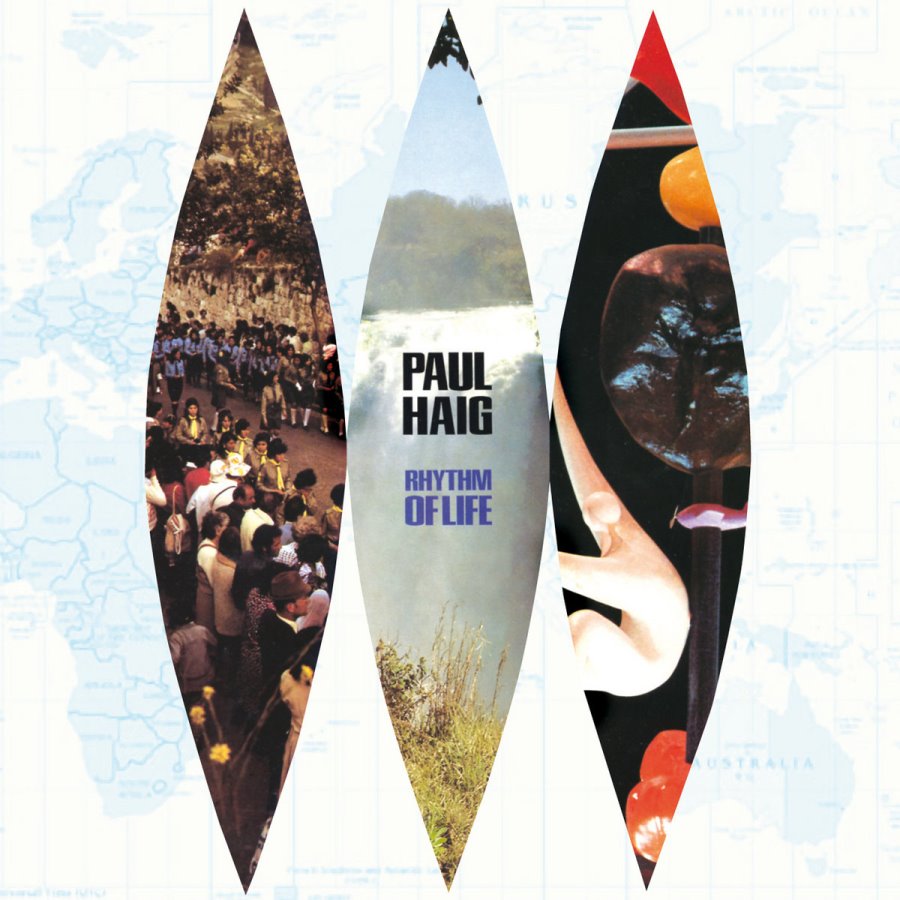
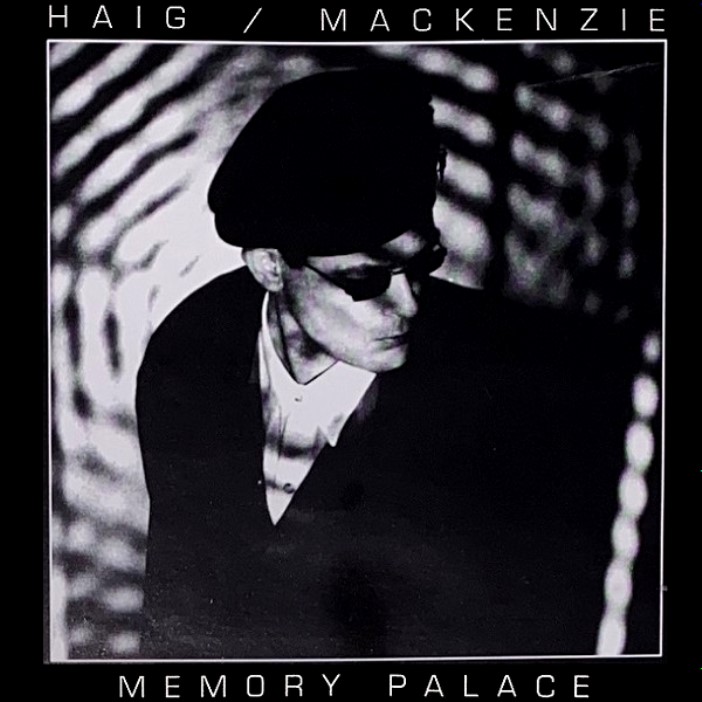
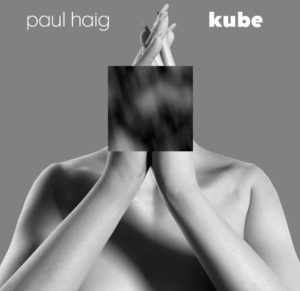
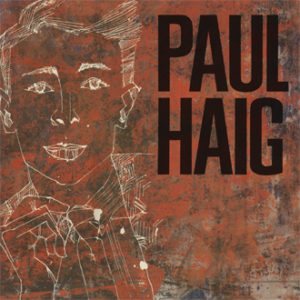 ELECTRICITYCLUB.CO.UK gives its warmest thanks to Paul Haig
ELECTRICITYCLUB.CO.UK gives its warmest thanks to Paul Haig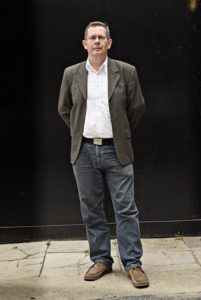
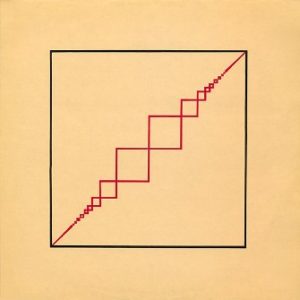
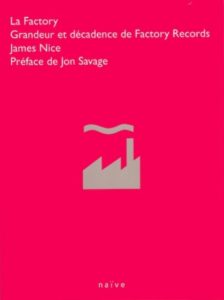 One of the books which influenced the approach I took was an excellent Creation Records history by Dave Cavanagh, which Alan McGee slated as the accountant’s version of Creation when it first appeared (though he changed his mind later).
One of the books which influenced the approach I took was an excellent Creation Records history by Dave Cavanagh, which Alan McGee slated as the accountant’s version of Creation when it first appeared (though he changed his mind later).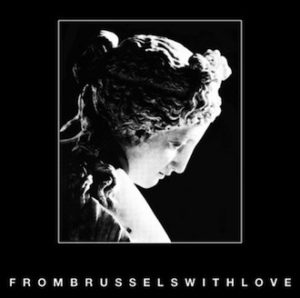 Factory Benelux and Les Disques du Crépuscule have common roots, but were quite different entities in their original ethos?
Factory Benelux and Les Disques du Crépuscule have common roots, but were quite different entities in their original ethos?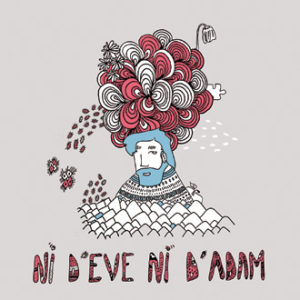

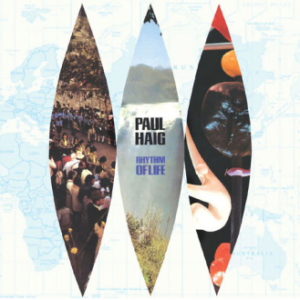 Paul just did things his way and wasn’t prepared to jump through all the hoops required of a mainstream pop star. For a start he was – and remains – far too shy.
Paul just did things his way and wasn’t prepared to jump through all the hoops required of a mainstream pop star. For a start he was – and remains – far too shy.
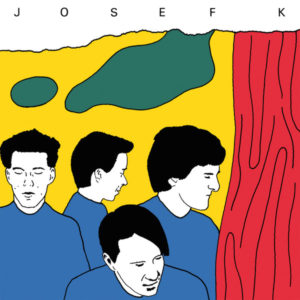
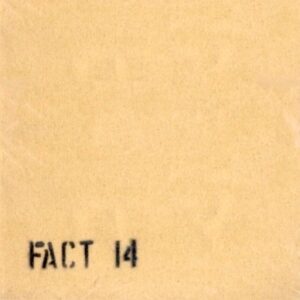
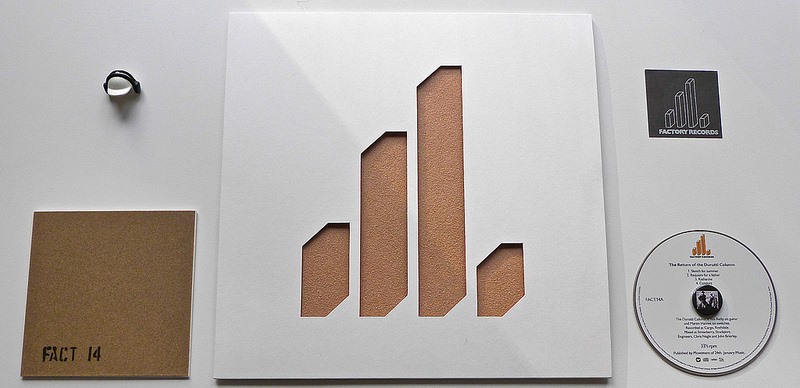
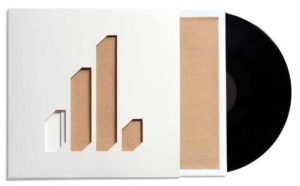 The only obvious, practical shape for the die-cut was Peter Saville’s original ‘bar chart’ logo, which appeared on the labels of most Factory releases between 1979 and 1980, Fact 14 included. It just looks right, and is also suggestive of a graphic equalizer, which I suppose is a bit Hannett. The pressing plant had already printed 2000 copies of the original inner bag though, so we had to throw those away. All the problems and changes also mean that the release date was late. Very Factory, I suppose.
The only obvious, practical shape for the die-cut was Peter Saville’s original ‘bar chart’ logo, which appeared on the labels of most Factory releases between 1979 and 1980, Fact 14 included. It just looks right, and is also suggestive of a graphic equalizer, which I suppose is a bit Hannett. The pressing plant had already printed 2000 copies of the original inner bag though, so we had to throw those away. All the problems and changes also mean that the release date was late. Very Factory, I suppose.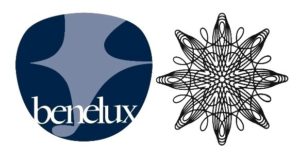
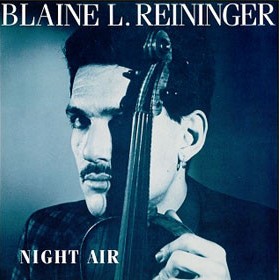 It’s a magical album about exile in Brussels and was a key influence on my relocating to the city a couple of years later. Expertly recorded and engineered by Gareth Jones, I might add. I’d love him to tour the whole album – maybe there will be an opportunity after
It’s a magical album about exile in Brussels and was a key influence on my relocating to the city a couple of years later. Expertly recorded and engineered by Gareth Jones, I might add. I’d love him to tour the whole album – maybe there will be an opportunity after 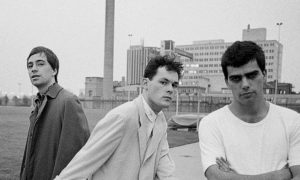
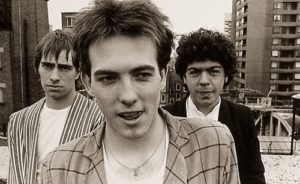
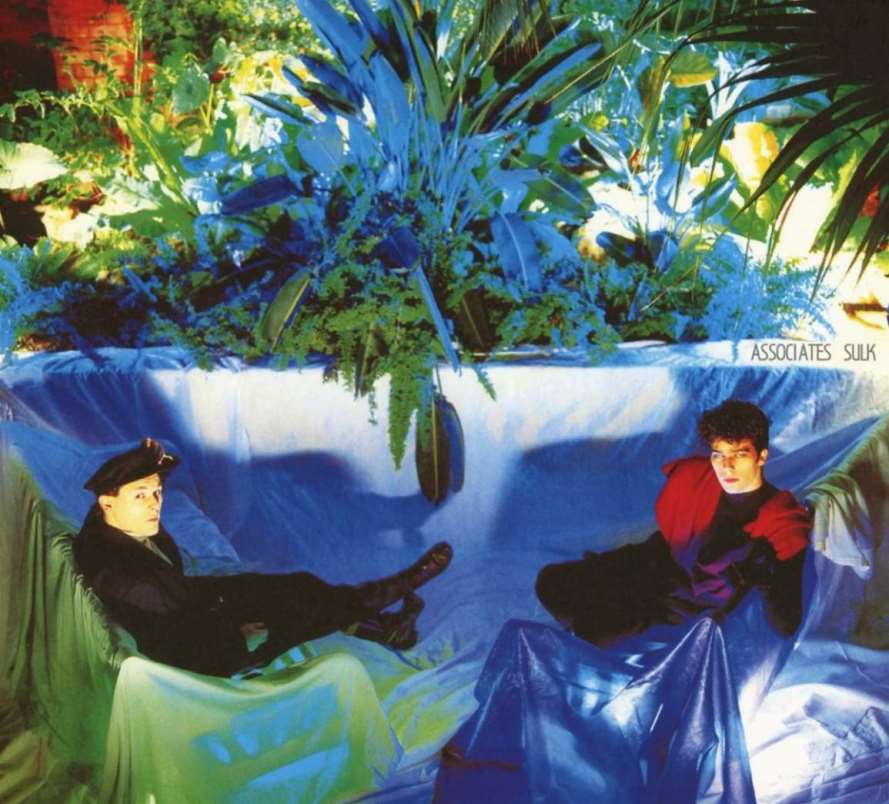
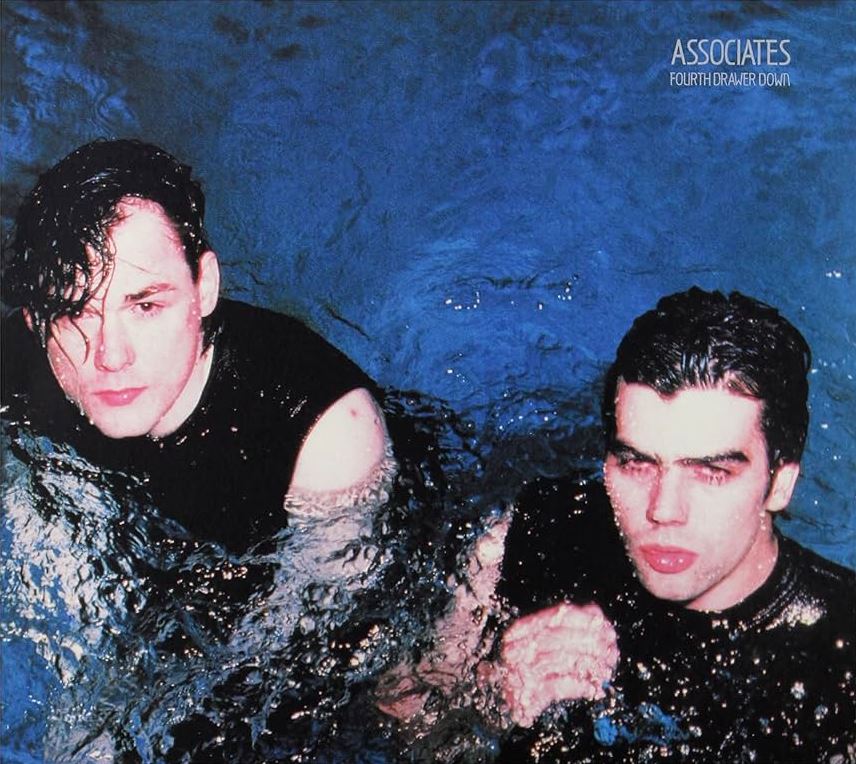
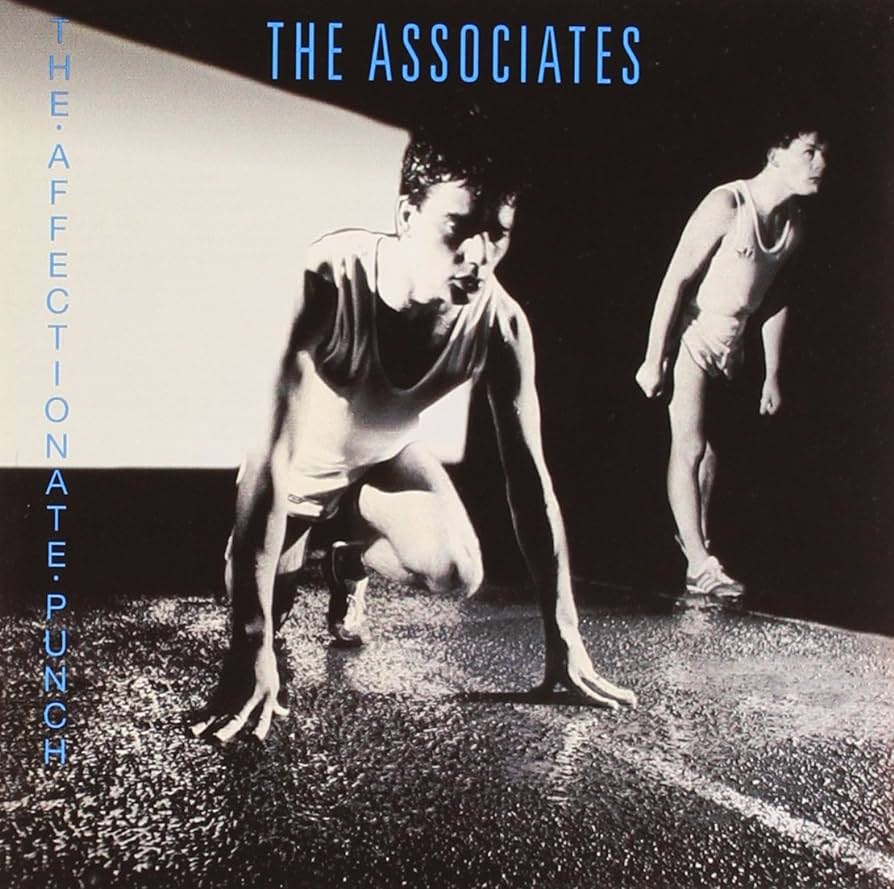
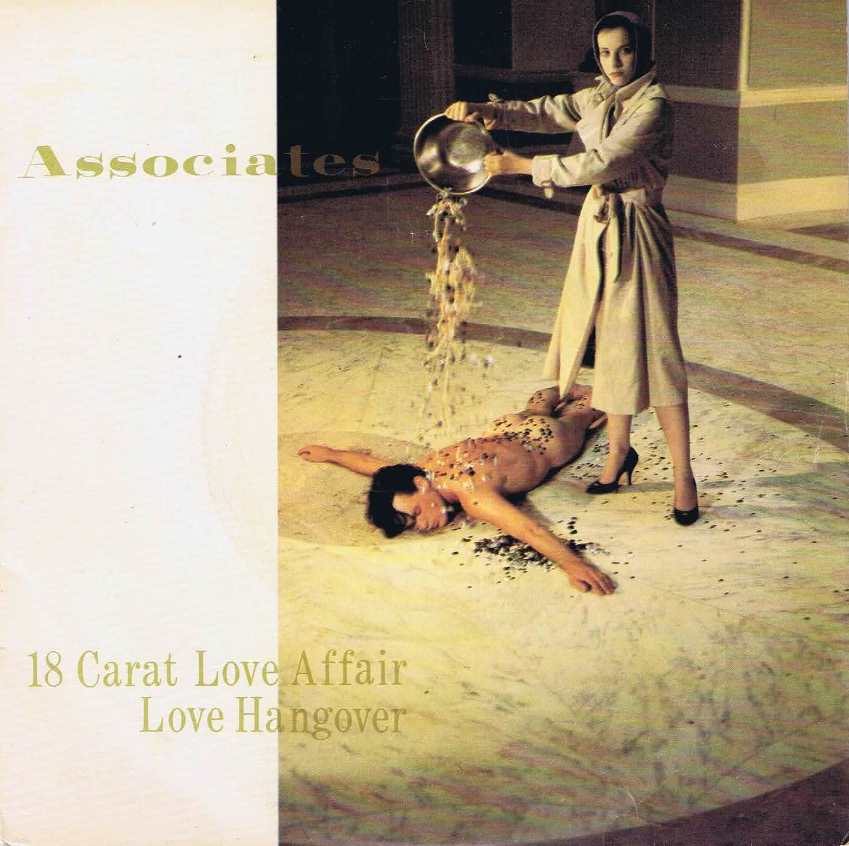
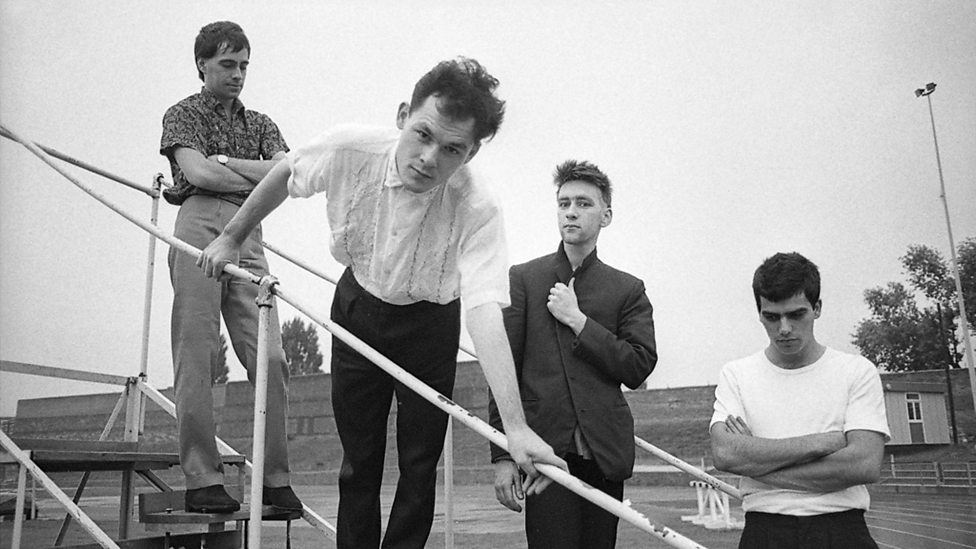
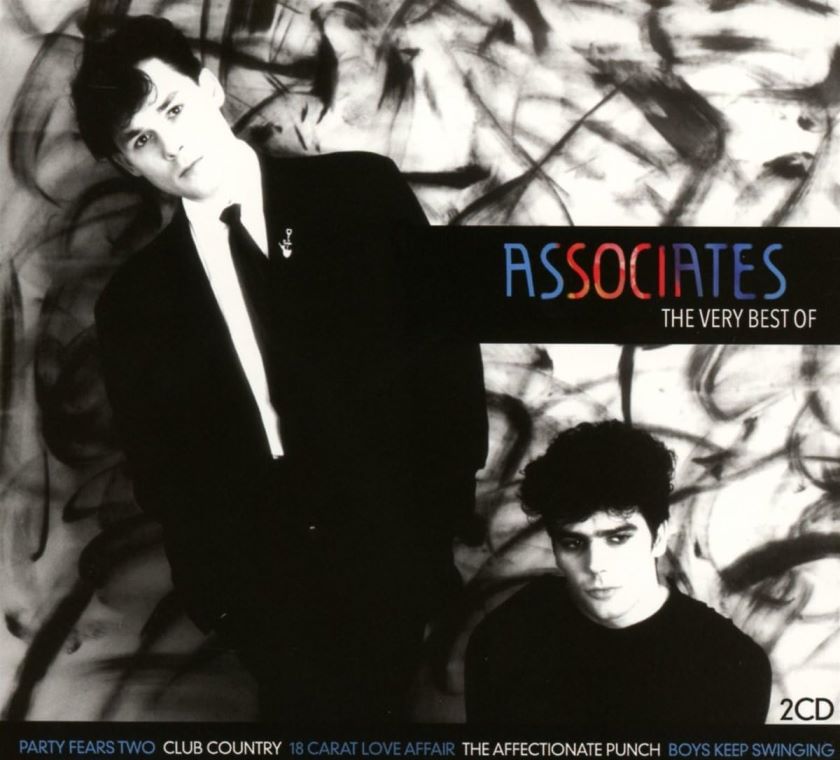
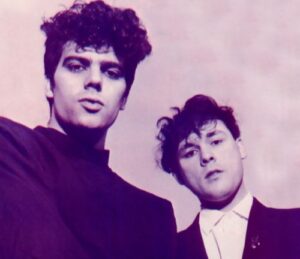
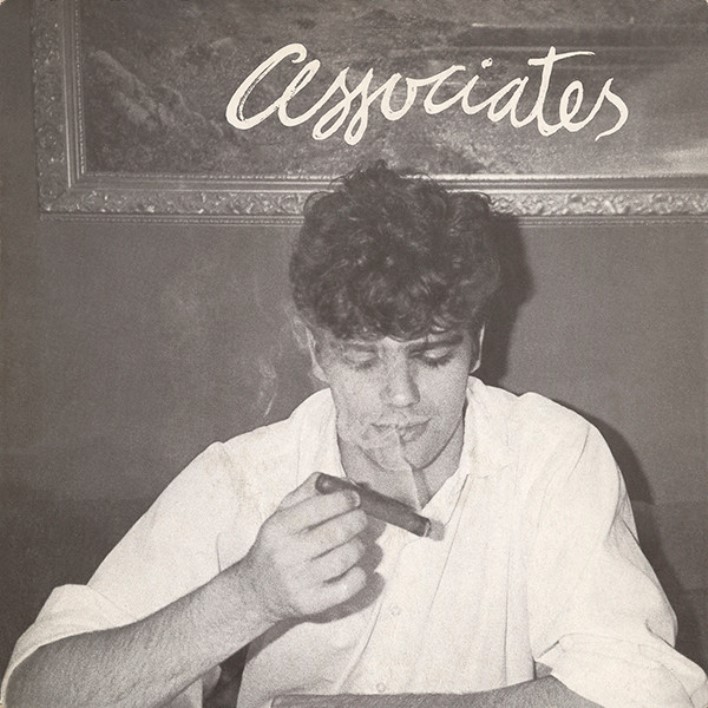
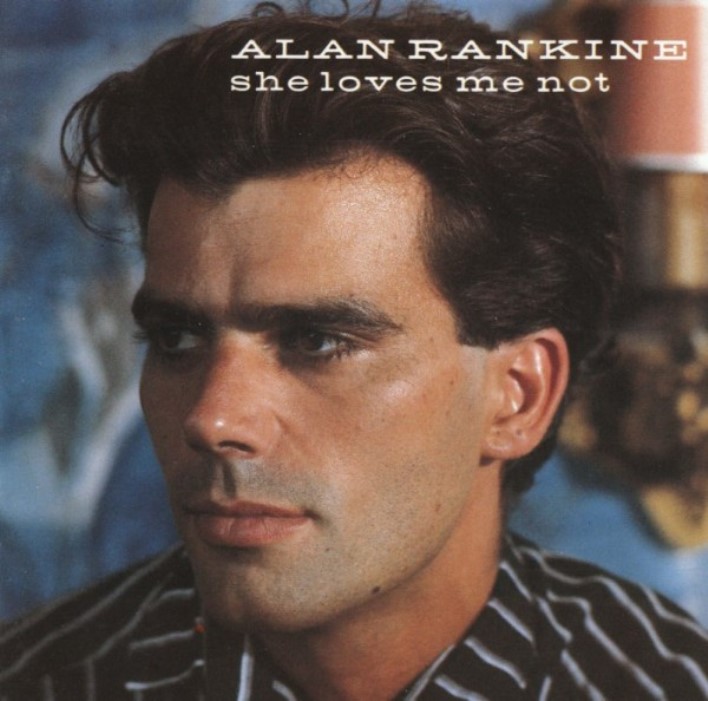
Follow Us!